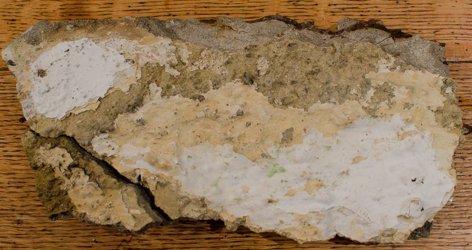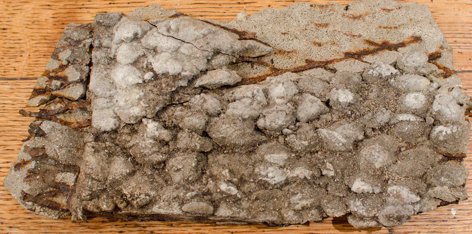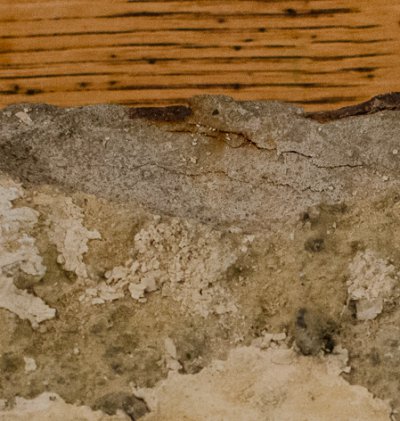paulb33
Member
- Messages
- 582
- Location
- Penarth, Vale of Glamorgan
With your kind help, I've established that the brickwork mortar contains lime. So, I'm now checking out the 1900 roughcast render.
One big lump has fallen off. See below. It shows a couple of coats of render on (corroded) metal mesh with outer roughcast layer. This has been lime washed and then painted with modern exterior paint.
I'd long assumed the render was cement-based. But, I've dropped a few lumps into vinegar and they're fizzing, reducing in size. Question: will the lumps disappear if its pure lime? If its a lime/cement mix, will cement residue be left behind?
Perhaps this test is too crude to draw definitive conclusions? Its pretty critical because it determines how I approach re-rendering and painting the gables. If its non-breathable cement render, then I'll re-render in cement and cover with non-breathing paint. If its a breathable lime or lime-mix then I'll have to go the breathable lime/lime-wash route.
Thanks for all your continued help.
Paul
One big lump has fallen off. See below. It shows a couple of coats of render on (corroded) metal mesh with outer roughcast layer. This has been lime washed and then painted with modern exterior paint.
I'd long assumed the render was cement-based. But, I've dropped a few lumps into vinegar and they're fizzing, reducing in size. Question: will the lumps disappear if its pure lime? If its a lime/cement mix, will cement residue be left behind?
Perhaps this test is too crude to draw definitive conclusions? Its pretty critical because it determines how I approach re-rendering and painting the gables. If its non-breathable cement render, then I'll re-render in cement and cover with non-breathing paint. If its a breathable lime or lime-mix then I'll have to go the breathable lime/lime-wash route.
Thanks for all your continued help.
Paul



